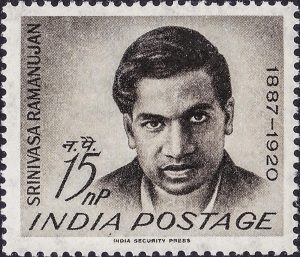The clash of religious belief and science in medieval Europe simply did not occur in India, where a “scientific outlook” has long prevailed
By Michael Cavalli
In the west, the idea that science and religion stand at opposite ends of a spectrum has long been widespread. Most people have taken as given the notion that worldly pursuits are, by their very nature, preclusive of the achievement of spiritual goals, that intellect and logic are antithetical to intuition and faith, and that there are basically only two kinds of people: the religious, or spiritual, who live by belief alone, and the rational, who accept only what is perceived by the senses and what experience and experimentation prove.
In the years leading up to the Enlightenment, Christianity and science arrived at an uneasy compromise after centuries of strife in Europe. Scientific authority was gaining recognition, but that of the Church had not completely waned. The tension eventually separated Church and State, leaving science and religion each to its own sphere of interest. The result was a cultural dichotomy in which two completely different approaches were encouraged, one for answering religious questions and another for scientific ones.

In religious matters, people were taught to read the Bible and believe everything in it without question. Skepticism, criticism and sometimes even personal interpretation were deprecated by most of the clergy, as they had been for centuries. However, in scientific matters, a new popular outlook appeared: people were taught to believe only in things that could be substantiated by empirical evidence. A strange situation came about in the West: one was either a rationalist or a believer, rarely holding a position in between.
That dichotomy largely exists to this day. In India, though, it has never existed—not to any great extent at least. In India, where religion has always been an integral part of everyday life, that word means something very different than it does in the West. Western societies are segmented in a way that intentionally keeps religion separate from almost everything else, but India is the opposite. Though the country has become more secular over the past few generations, most parts of Indian society revolve around Hinduism as they have for millennia.
Long before the fall of Rome and the rise of Western civilization proper, India was scientifically advanced. Both the Harappan and Vedic civilizations were very sophisticated for their times, and to this day India has never failed to progress scientifically, even if such progress was slow at times. While Christianity, the dominant religion in the West, has always been detached from science—despite various attempts by the Church to appropriate it—religion and science in India were integrated from the beginning. It is only with modern India’s increased Westernization (or secularization, really) that the beginnings of a rift between them can be observed.
Since at least the Vedic period, scientific advances in India were made almost entirely by deeply religious individuals, for the subcontinent’s brightest minds were neither rationalists nor believers exclusively, but rather a combination of both. As such, religion became an integral part of all Indian society, and scientific advancement—including a scientific outlook on all things—became an integral part of the religion commonly known today as Hinduism.
Hindu achievements in science went unappreciated in the West for too long. Besides creating chess in its original form as well as a sophisticated number system, the Hindus made numerous scientific discoveries that can rightly be called major today. Those discoveries include, but are certainly not limited to, the relativity of time and space, heat as a source of molecular change and the existence of atoms. The Sanskrit word anus means atom in the Greek sense of “uncut” or “indivisible” and also signifies a unit of time based on how long an atom takes to traverse its own unit of space.
Hindu medical science was advanced as well. Classical treatises prove that India was home to some of the brightest physicians and psychologists of the ancient world. They took mental health as seriously as physical health, paying close attention to the way diet and stress affect the body. They recorded ailments, documented symptoms and employed preventives, treatments and cures. India’s fourfold concept of disease, diagnosis, cure and treatment may have influenced medicine in Greece and China; it can certainly be seen in Western medicine today.
It is no surprise that yoga, which may be considered a science in the truest sense, is part of Hinduism. Yoga applies a scientific methodology to spiritual matters and does so without misunderstanding science or spirituality in themselves. Logic and intuition each have a special place in human life. Spirituality cannot be forced into a mechanical mold; Hinduism understands this. Its scientific methodology simply refers to the different ways (such as yoga) Hindus can rigorously test the validity of their religion’s spiritual or metaphysical claims.
While Hinduism can be rigid in some ways, it is generally nondogmatic, which is to say that it does not require its adherents to accept specific dogmas in order to be called Hindus. Nor does it demand blind faith from its adherents—though they can believe blindly if they choose. Hindus are always free to take a more scientific approach if they prefer, which includes analyzing, hypothesizing, experimenting and ultimately realizing for themselves whether a given religious claim is valid. By encouraging intellectual freedom in this way, Hinduism parallels the kind of thinking that fuels honest science in the West. What makes such thinking so valuable in a Hindu, however, is that it is applied to all areas of life, especially where one usually finds it applied the least: spirituality.
Hinduism’s scientific outlook is an expression of its nondogmatic nature. If Hinduism were dogmatic, the intellectual freedom necessary for scientific advancement would have been suppressed in India, as it was in Europe when political power carried the spirit of dogmatism from the churches into every important sphere of European culture, ultimately stifling scientific progress and ushering in the Dark Ages. Instead, scientific achievements in India were made as part of the progress of Hinduism itself.
While scientific thinking may be a detriment to other religions—especially those which are more dogmatic—to Hinduism, it is a handmaiden. Let us, therefore, recognize all that makes Hinduism great, and celebrate its scientific outlook.
The Goddess Spoke to Him
I owe everything to Goddess Namagiri Thayar of Namakkal who leaves these formulae on my tongue in my dreams. An equation for me has no meaning unless it expresses a thought of God,” wrote Srinivasa Ramanujan.
A recent article by Roshni Chakrabarty in India Today states, “Srinivasa Iyengar Ramanujan, born on December 22, 1887, as the son of a sari shop clerk, the man who gave us mathematical equations that are solving cosmic problems even now, was certainly much, much ahead of his time. A self-taught mathematician, it is astonishing how much the man achieved, turning into one of the most significant groundbreakers in history, much like Newton and Einstein.”

That such a person was not only profoundly religious but actually credited his discoveries to divine communication is a powerful demonstration of the compatibility of science and the Hindu faith. His unusual and unfortunately short life was recounted in the 2015 film The Man Who Knew Infinity. An early math prodigy, he ultimately ended up at Cambridge University working in partnership with the leading mathematicians of his day.
He developed 3,600 theorems, stating them as conclusions but without the usual long detailed proofs. Cadres of mathematicians have since worked on these theorems, and only a handful remain unproven. How he was able to arrive at these theorems by intuition remains one of science’s unsolved mysteries. In the last days of his life, at age 32, he produced thirty pages of “mock theta functions,” a deeply esoteric corner of math now called “mock modular form”—a concept that defies explanation in layman’s terms.
Ken Ono, professor of mathematics at Emory College and an expert on Ramanujan wrote, “The formulas that Ramanujan put in these last notebooks could not have resulted from pure computations, because the methods to do such computations were worked out only in the late 1970s and 1980s, many years after his death. He must have had deep insights. It’s puzzling how he came to these findings.”
According to T.V. Venkateswaran, in a 2017 article in FirstPost, “Surprisingly, in 2010 scientists found a profound and precise relationship between Ramanujan’s cryptic mock theta functions and the hottest item in theoretical physics—string theory and black holes.”
Prof. Ono wrote, “The conjuncture called ‘umbral moonshine conjuncture,’ derived from the work of Ramanujan, is crucial to understand a fundamental question that physicists have been asking so far: what is the universe made of? The very same mathematics would illuminate the behavior of black holes.”
It is worth pondering that the Hindu religion did not oppose Ramanujan’s efforts in any way, and that he himself credited openly divine inspiration for his discoveries, which miraculously proved to be far ahead of their time.
Michael Cavalli is a writer/editor specializing in e-commerce copy writing, web content writing, and copy editing. A longtime student of Hinduism, he lives in the United States.

Beautifully written, I appreciate the way Mr. Cavalli writes this article. He delivers poignant information without prevaricating about the bush. Direct and to the point. I look forward to reading his next article.